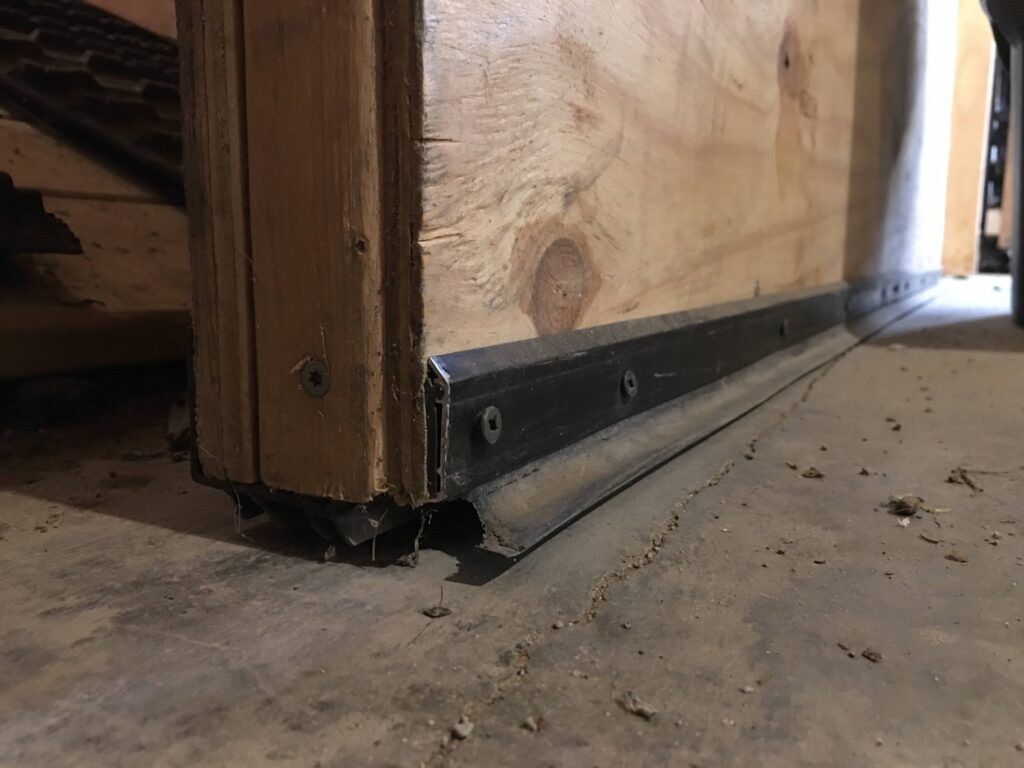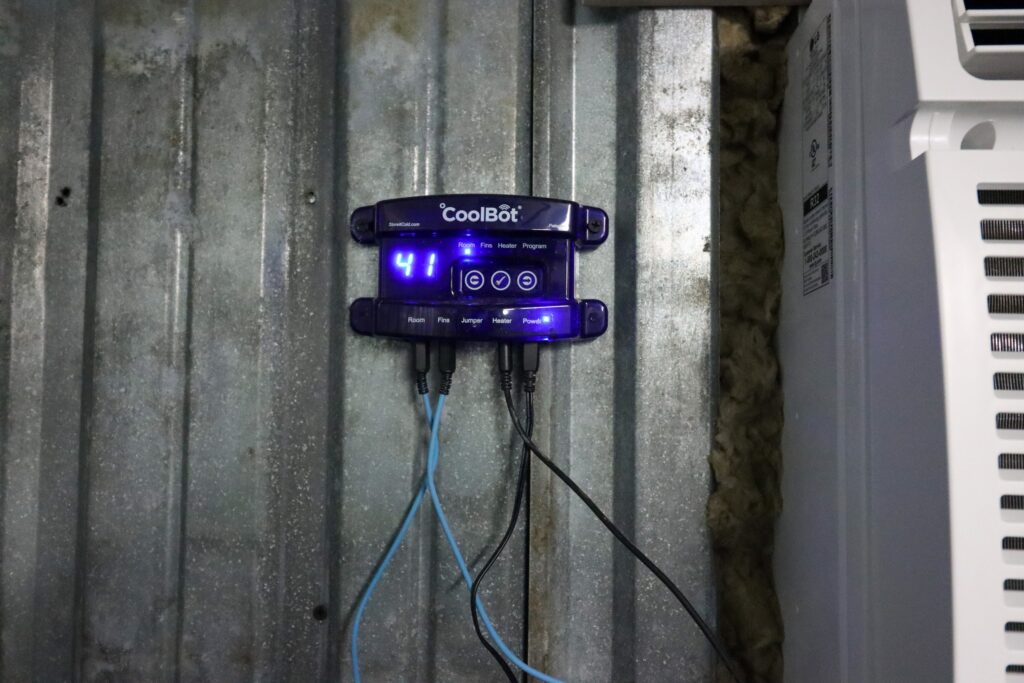Occasionally, during longer cold snaps, we receive a lot of questions about storage crops freezing in coolers. This post summarizes some ideas for preventing freezing.
Summary
- Seal up the cooler box – stop drafts by sealing the cooler walls and doors.
- Keep produce off the floor and away from the walls – break conduction paths and promote air flow.
- Circulate air – add a small fan to mix the air in the cooler and level out cold and warm areas.
- Monitor and alarm – Add a remote monitoring system to notify you before there is a problem.
- Add heat if you need to – a safe space heater on a thermostat is cheap insurance.
Seal up the Cooler Box
The main culprit in freezing is most likely infiltration of cold, outside air into the cooler. If you’re seeing freezing in one area, there is likely an air leak somewhere nearby. Although freezing generally happens down low, growers have experienced top layers of top bins freezing while lower levels have not. Infiltration can be very localized. This can be through cracks between panels or in the wall construction of self-built coolers. Another possible source of air leakage is where refrigerant lines or condensate pan drains pass through the wall or at openings for CoolBots™. Outlets and lighting fixtures may be another source of air leakage. Doors are often a place where seals wear and need regular maintenance.
We put row cover around the doors that were exposed to the outside on these super cold nights!
Grower – Argyle, NY
Give your cooler a once over, looking (and feeling) for drafts. An infrared thermometer is also handy in tracking down where cold air may be getting into the cooler. The other trick than can be helpful is go in the cooler with the lights off and look for daylight. Seal any openings up with spray foam or caulk for now and come back to it with a longer-term fix in milder weather to make it cleanable and more durable.

Keep Produce Off the Floor and Away from Walls
This is a good practice for a number of reasons including food safety, rodent deterrence, avoiding condensation, etc. But, another big reason is to prevent conduction directly from cold surfaces such as the floor and walls to bins of produce. It also helps ensure there is air flow around all the bins to help equalize temperature in the room preventing cold spots. If you have bins right on the floor, consider stacking on a pallet just to provide some space underneath. Try to keep everything 4-6” away from walls and up off the floor.
Circulate Air
We highlight the use of small fans to mix the air in warm rooms in our post on that topic. The same principle applies here.
Air circulation helps! I’ve always struggled with certain cold spots close to the ground, while it was getting warmer than I wanted at 4ft or higher. This winter I hung a downward facing fan from the ceiling. It’s equalized the temps top to bottom within 2-3 degrees so I don’t have to overheat the top of the cooler to keep the low parts above freezing.
Grower – East Montpelier, VT
Monitor and Alarm
It can be very helpful to have a monitoring and alarm system that’s measuring temperature in your cooler and notifying you if it gets below (or above) a critical level.
It’s a good idea to have an alarm system in the cooler in case the heater fails. We have a small electric heater in our refrigerated container, but it burned out once and set off the alarm. Luckily, we had a backup. You can just use an extra strength Monnit wireless temperature alarm, get it with the extended antenna, drill a hole in the cooler so it extends outside and can pick up a signal easier. Cheap in the long run.
Grower – Dummerston, VT

Add Some Heat
Adding heat is usually the first thing we all think of, but start with the others above since they’re relatively easy and inexpensive and probably need to be addressed anyway. But, if you’ve done that and still need some heat to prevent freezing take a look at our blog post on warm rooms which provides some ideas for thermostat controlled heaters. The main issue with space heaters is that they aren’t designed for low-temp use or freeze protection. So we need to control them with a thermostat that allows a lower temperature set point. We also have an online heat load calculator to size your heater. Thermostats with pre-wired plugs are available and make this job easier.
Stubborn Coolers – Still have problems? There may be more to it than the “easy” fixes above. Bank barn walls, slab insulation, and other site specific construction details can lead to issues with heat loss through the perimeter. Get in touch with us if you have a particularly problematic cooler situation and we can troubleshoot it together.
Share this post!
https://go.uvm.edu/frozencoolers
Acknowledgements
This material is based upon work supported by the National Institute of Food and Agriculture, U.S. Department of Agriculture, through the Northeast Sustainable Agriculture Research and Education program under subaward number LNE19-375. Any opinions, findings, conclusions, or recommendations expressed in this publication are those of the author(s) and do not necessarily reflect the view of the U.S. Department of Agriculture.


